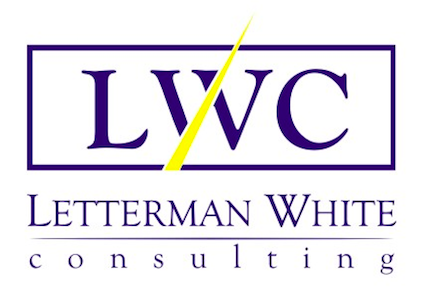Note: This article first appeared in the February 2021 Law Practice Today
Introduction to Succession Planning
Succession planning for lawyers means retiring, a career pivot, perhaps selling a practice, and definitely transitioning clients and open matters to another lawyer. It marks a life-cycle transition point. Psychologically, it means change and change is always hard, even when it’s a choice. Retiring or pivoting forces you to questions you may prefer to avoid.
Do you want to find an internal successor to handle your files? If that’s not an option, will you recruit someone from the outside, perhaps a junior lawyer – someone you have mentored in the past? Do you think your practice is desirable as a merger or acquisition candidate?
What should be on my “to do” list? What are the possible ethical missteps? What is my practice worth?
Law Firm Business Valuation
The underlying and unspoken assumption of succession planning is that there is value in the law firm or practice that someone else would want that outweighs the cost of its acquisition. When the value is greater than the acquisition cost, succession planning is about the logistics of complying with ethical rules regarding valuing a practice and retiring.
Law firm partners with a significant book of business have power. If they leave without first transitioning clients, the clients will leave too. This means that managing partners have a responsibility to think about succession as a business sustainability strategy. What are the benefits of being a partner in your firm? What is the cost to become a partner in your firm? Does your firm have a leadership pipeline to partnership?
The best succession plans are started years in advance of an actual transition and incorporate an understanding of the firm’s business model, partnership agreement, and how decisions about practice value are made.
Whether you are in a firm or a solo practitioner, take a moment to value your business. Consider the following:
• Hard assets: cash-on-hand; property
• Transferable, valuable, happy client relationships
• Brand recognition
• Skilled and committed staff
• Embedded processes and culture of effectiveness and efficiency
• Work in progress
• Long-range strategy
• Healthy capitalization
• Receivables
• Strong community presence
• Positive office culture
Ethical rules affect valuation. Remember to consult your state’s ethical rules on transferring client matters, referral fees, or fee-splitting. There are often limitations. Look for obligations to keep clients apprised of possible changes in representation and their choice of counsel, transfer files only to competent lawyers, and limit excessive valuation of good-will. When discussing a possible acquisition, make sure to protect client confidentiality, consider conflicts, and review fee agreements in engagement letters. These issues may also affect the value a practice or its value to a particular acquirer.
Law Firm Roles and Responsibilities of the Business Model
When a lawyer leaves a firm affect, it may affect the firm structure and responsibilities of others left behind. Who, in your firm, is responsible for rainmaking, overseeing work processes and attorney assignments, and making sure that bills go out on time and get paid? What processes in your effective and efficient business model will change when a particular partner retires? The connection is often obvious between a particular lawyer and the percentage of revenue that person brings to the firm. It’s not always as clear who is responsible for recruiting, hiring, onboarding, training and development, advancing, evaluation, compensation, and termination of associates and staff. It’s often even less obvious who is doing what, when, and how to ensure that quality work gets completed on time in different areas of a firm. Use the table below to better understand your firm’s business model and what needs to continue uninterrupted.
Checklist
When a firm closes or a solo practitioner retires, pay attention to ethical rules regarding file retention and ongoing cases with pending court dates. Malpractice insurance coverage is for “claims made,” so even if you are retiring you will need a “tail” policy to cover any legal malpractice claims made after those doors are closed. Make sure to:
· Finalize any active files where possible. If you can close out a matter and client representation, do so. Use disengagement letters and include your intention to retire.
· Advise clients with active files of your intention to retire and their need to retain new counsel. Don’t forget to remind clients of important time limitations and scheduled dates.
· Active litigation files usually include court or deposition dates. Request extensions, continuances, or new dates where possible. Under some circumstances, ethical obligations may require you to delay your retirement. Remember to follow court rules regarding motions to withdraw your representation and substitute new counsel.
· Return original documents and transfer electronic files to clients. Advise clients how long you’ll be retaining files, which depends on your state’s ethical rules.
· Make sure to document any decisions and confirm agreement by your client.
· Check your state for ethical obligations regarding retiring or suspending your active license, including change of address and contact information.
Five Steps for Succession Planning in Advance
There are five steps for succession planning: (1) Hire right; (2) Develop People; (3) Transition Leadership and Management; (4) Transition Clients; and (5) Reward Departing Partners. Planning for the departure of partners begins several years in advance.
1. Hire Right
Recruit lawyers with leadership competencies or develop these skills in addition to top-notch legal skills. These lawyers will be better at managing client relationships, developing new client relationships, and support the efficient and effective running of the law firm’s business model.
Not every lawyer should become a partner; however, hire lawyers that are partnership material. What are the expectations for partners? Should they show business development potential? Do they need to have an interest in running a department? Do you expect them to collaborate with other departments, like marketing or attorney development? Do you expect them to mentor and train newer lawyers? When lawyers are hired because of the schools attended or honors received instead of their vision of lawyering, leading and legal capabilities, who supports firm sustainability? Hire lawyers that will contribute to a sustainable culture – a diverse, equitable, inclusive culture where well-being and belonging are cultivated.
2. Develop People
Even perfect hires need development. Train and mentor successors in marketing, client relationship development and management, law firm leadership and marketing, law firm finance, understanding the firm’s business model, and mentoring others. None of these competencies are taught in most law schools.
Make sure to:
• Expose associates and junior partners to management issues as part of their developmental process.
• Expose them to the firm’s financial model and goals.
• Include them at regular meetings and discuss progress toward goals.
• Share information on management decisions. Not all is sensitive or confidential.
• Delegate issues dealing with practices, technology, marketing to associates or small committees. People learn best by thinking through difficult challenges, making decisions, and implementing those decisions. Where the outcomes are less than perfect are the opportunities to learn and group.
• As they develop offer them leadership position on more important issues.
3. Transition Leadership and Management
People learn to lead and manage others by leading and managing others. Introduce leadership training and create new roles for people to learn these skills. Have an assistant or co-managing partner or manage with a triad executive committee. People learn by watching more experienced people lead, so give them opportunities to ask questions about and how leadership and management decisions are made and participate in the discussions and decisions.
4. Client Transitions
No firm wants to lose clients when a partner retires, and this is preventable with planning. As uncomfortable as these conversations are, talk retirement and know when it is coming. Three to four years before a retirement, a introduce clients to other partners and associates. Allow time for trust to develop with other firm attorneys. Does your business model encourage or discourage this behavior?
In firms with sustainable business models, identify successor lawyers for each client and have them prepare to take over for primary lawyers at retirement. Include successor lawyers in lunches and client visits and transition portions of client work to successor well in advance of transition.
5. Reward Departing Partners
Sustainable business models generate partners who support client transitions. They are not worried about their livelihood and power. Return capital – original investment and profits-not-taken. Figure out fair value of a partner’s ownership interest and pay it. Fund retirement benefits. Consider providing compensation through of-counsel arrangement that support the mentoring and client transition support needed for sustainability.
Conclusion
Succession planning is shifting control of the firm and clients and doing so without going awry of ethical obligations. It answers questions about the value of retiring lawyers. It provides longevity and sustainability for a firm. Succession planning is an opportunity. Take it.




